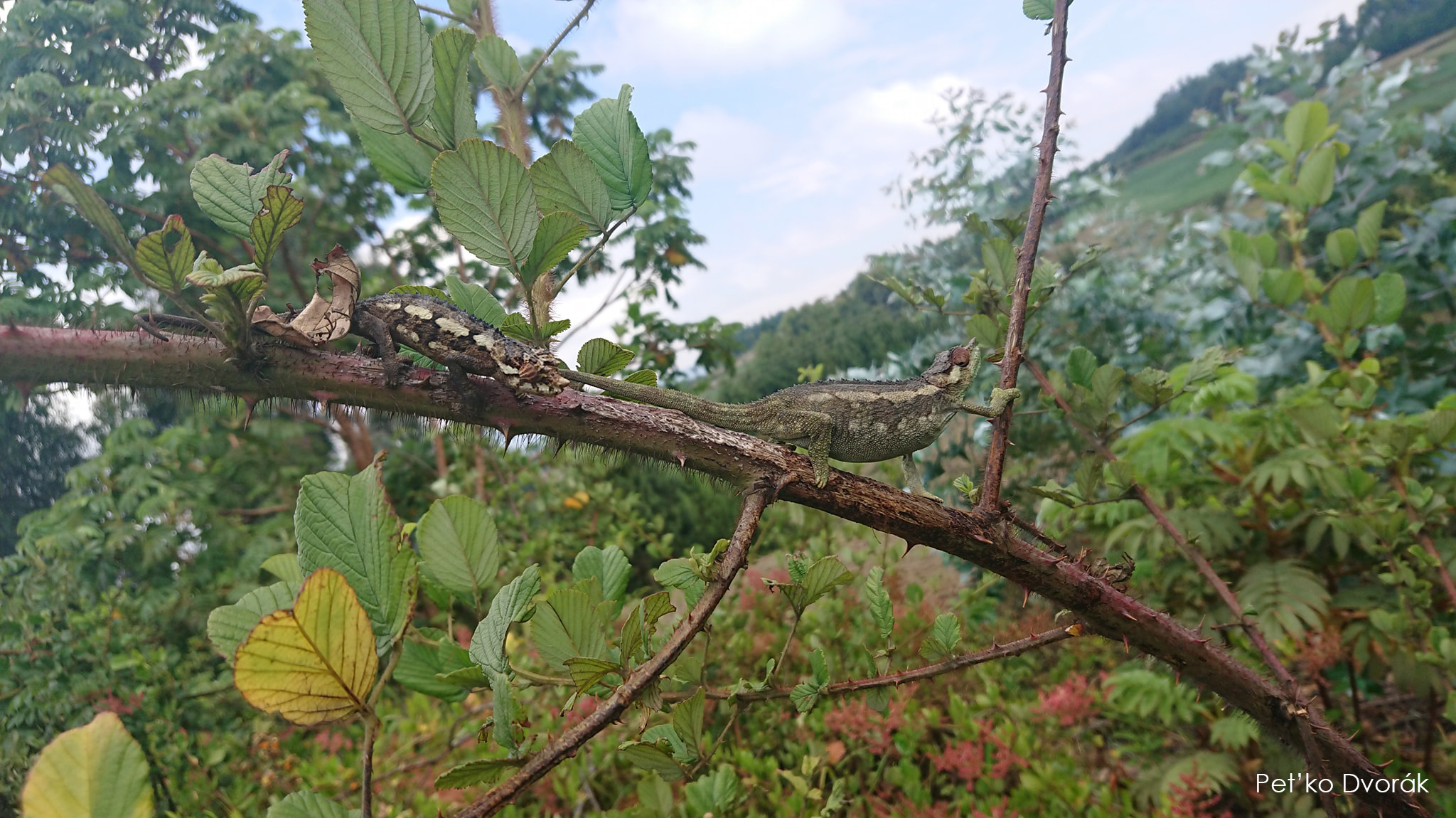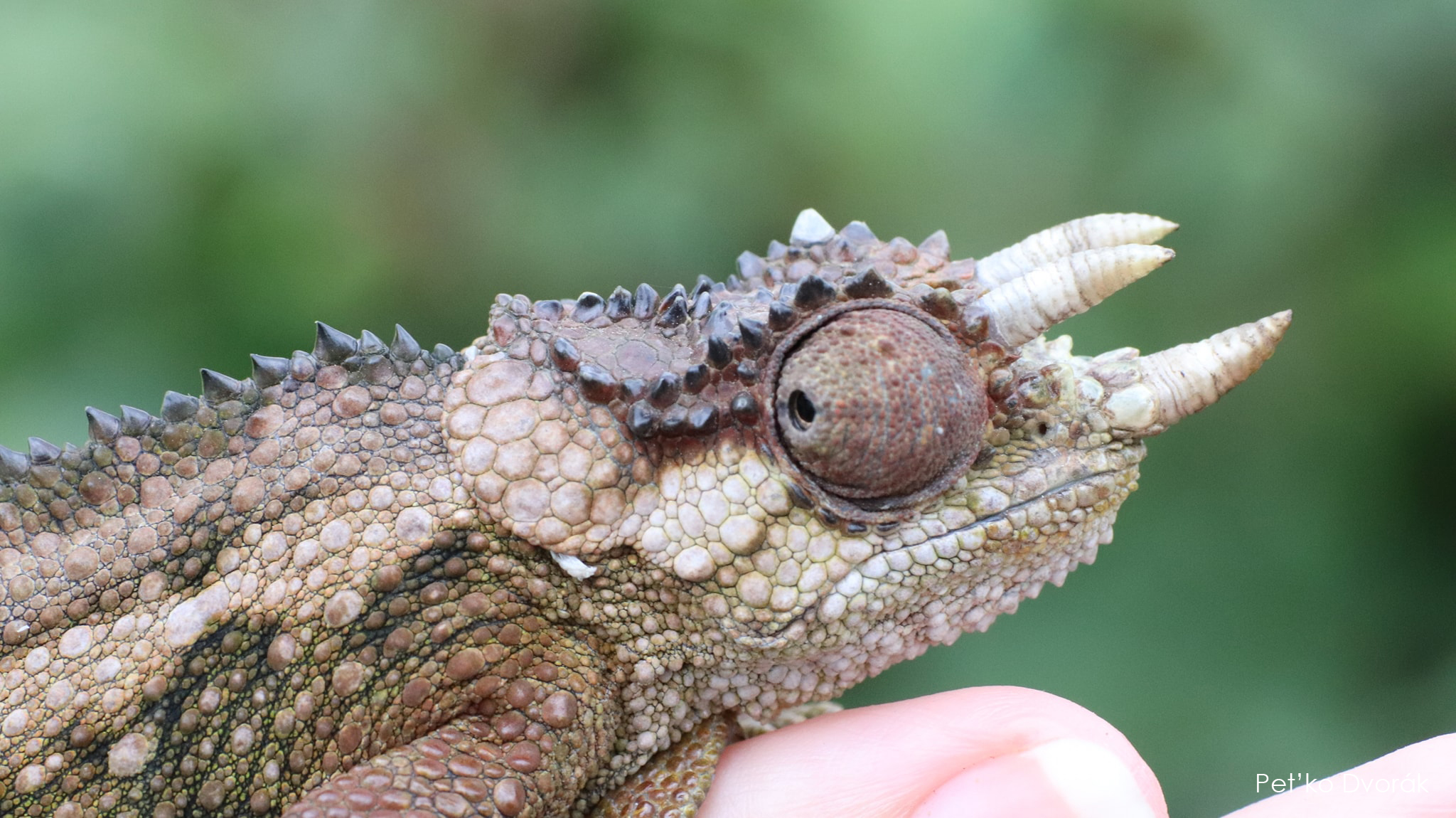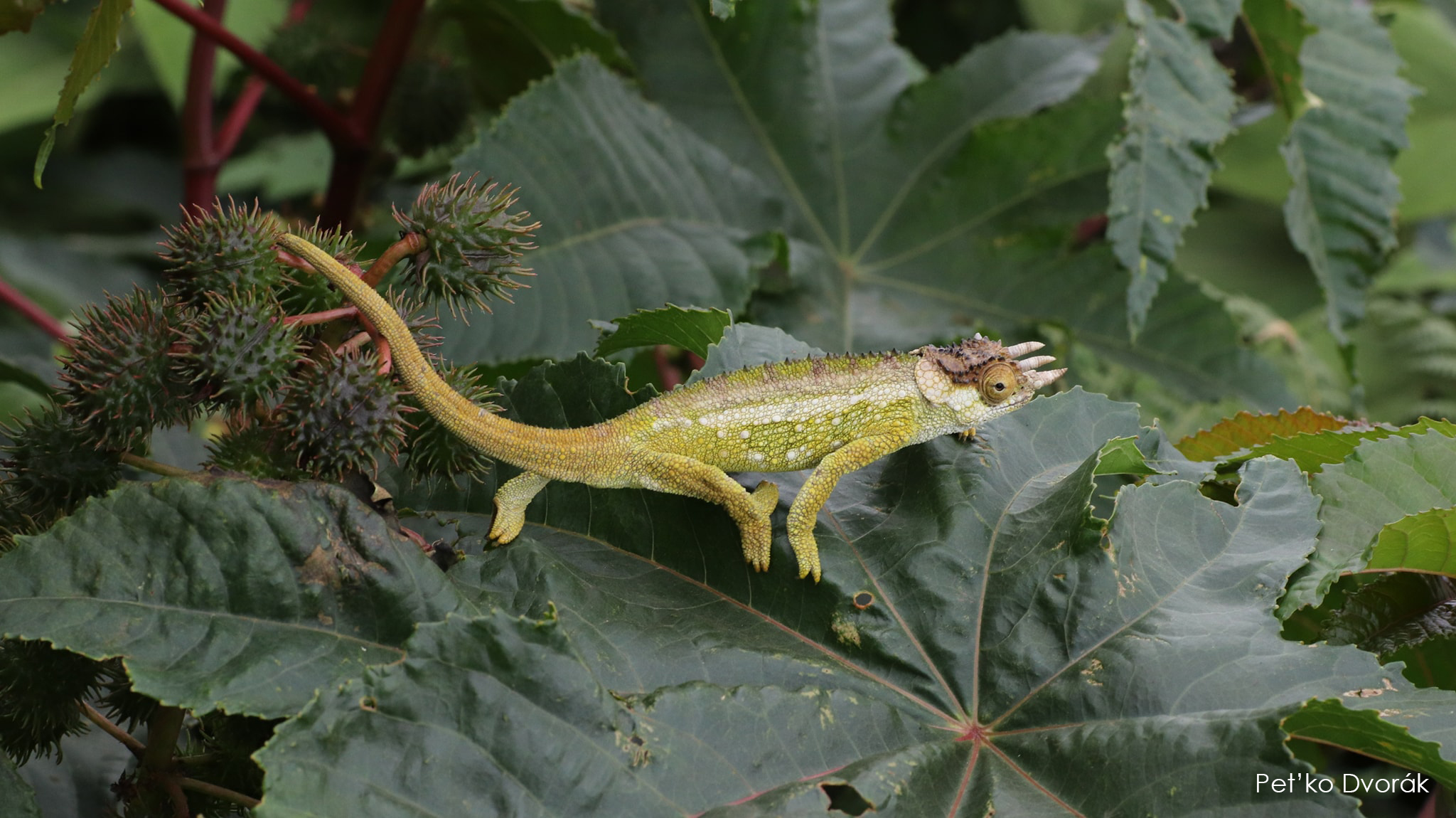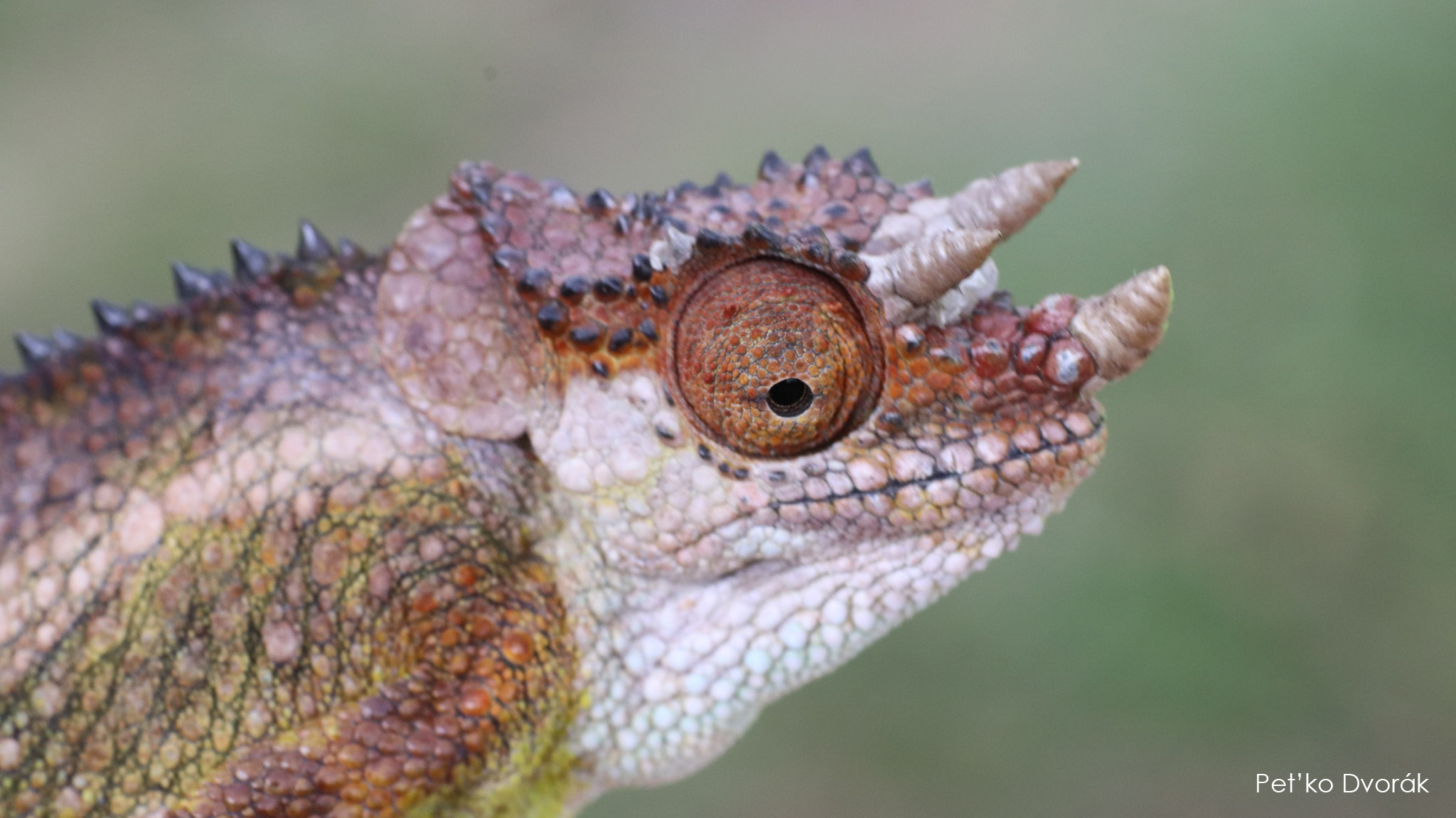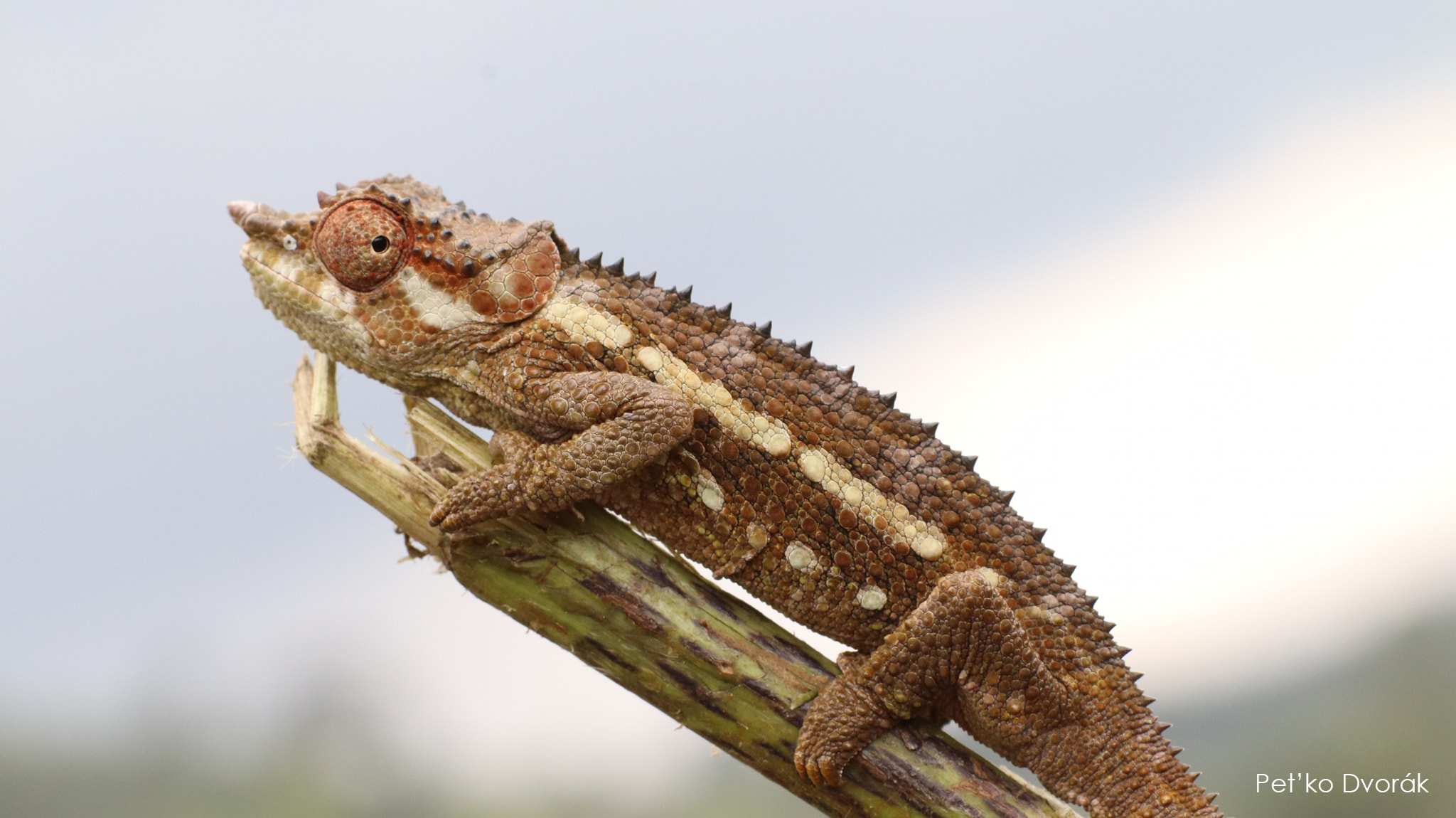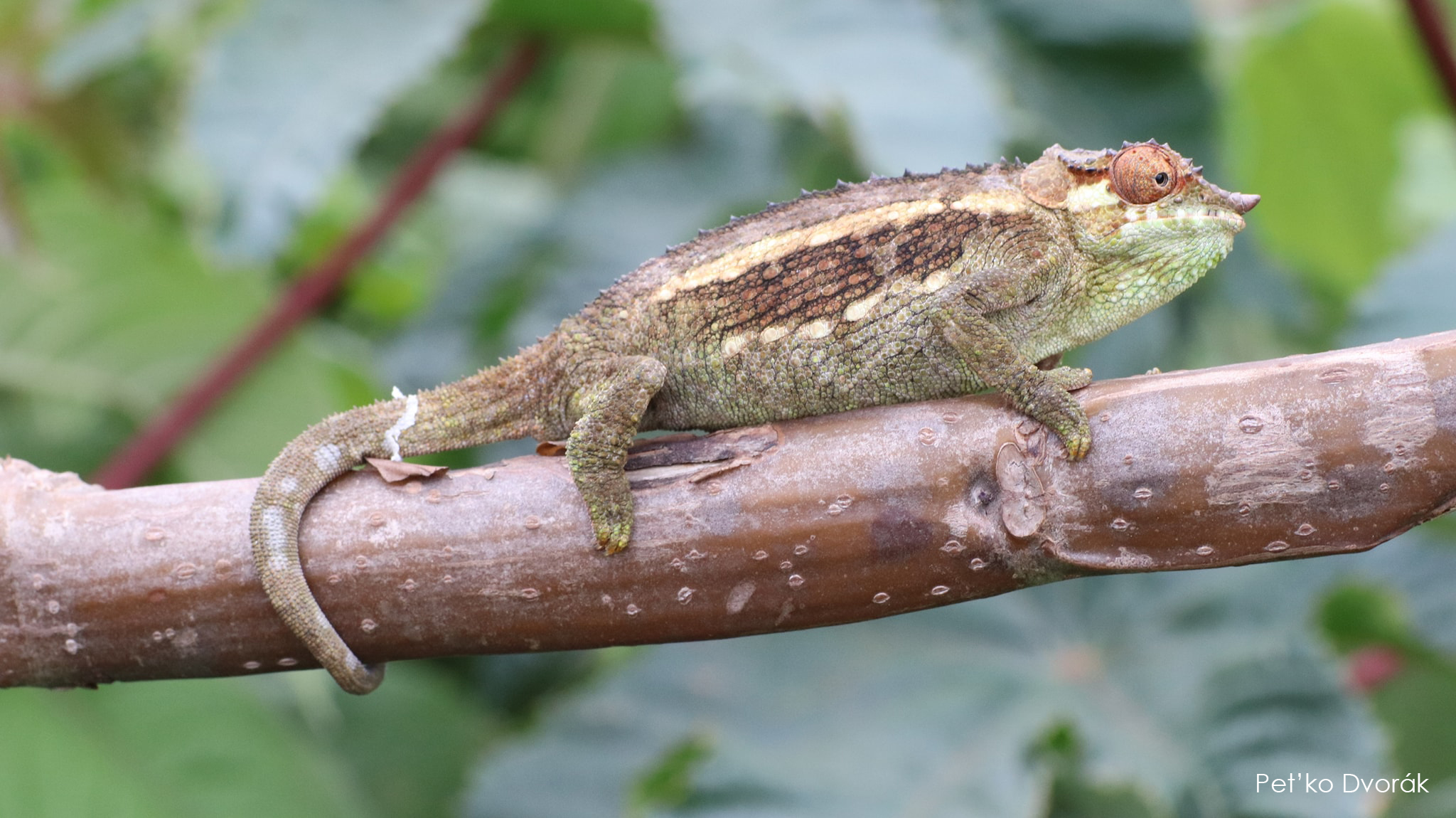Trioceros fuelleborni Natural History
Bracketing Lake Malawi in the southwest of Tanzania we find the Livingstone Mountain range. And at the northern tip of this mountain range an area known as the Poroto Mountains holds a special three horned chameleon called, appropriately, the the Poroto Three-horned Chameleon, or, to chameleon enthusiasts, Trioceros fuelleborni. This chameleon is named after Dr. F. Füllebron who was part of the team who studied this species.
Trioceros fuelleborni is a small chameleon, about 4 long with males slightly larger. Both males and females will have three short, but well defined horns, though females will sometimes have only the rostral horn prominent. They are a high elevation species, recorded between 2000 to 2500 meters above sea level which places them firmly into montane species care.
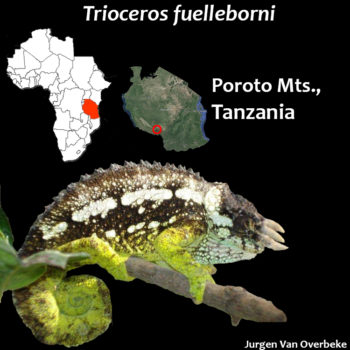
Captive Husbandry
Jurgen Van Overbeke is a chameleon breeder in Belgium who has extensive experience with a wide range of chameleon species. He offers his insight into breeding and keeping Trioceros fuelleborni.
“Trioceros fuelleborni is a cared for like other high elevation Tanzanian species, Pet’ko Dvorák measured temperatures in the field at 20-21C during the day and from 10-15C at night. We need to recreate this in captivity. I have had great success with keeping them outside until it gets too hot. At this point I must bring them into a cooler room inside the house – the basement in my case.
I house them individually in well planted terrariums. They are not picky eaters and will eat whatever fits in their mouth. Mine would enjoy silkworms and crickets that were gutloaded with bee pollen and organic fruits and vegetables.
They are live bearing with a surprisingly long gestation at 7-10 months. Females will produce 8-9 babies up to 20 babies for the fully mature females. The babies reach sexual maturity at around one year.
The future of Trioceros fuellborni in captivity looks bleak as there are only a handful of individuals in European collections. With Tanzania closed, it may very well soon disappear from captive collections“


A male Trioceros fuelleborni from Jurgen’s private collection
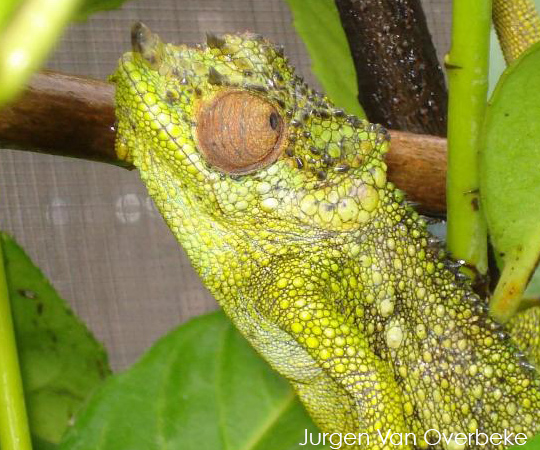
A female Trioceros fuelleborni from Jurgen’s private collection
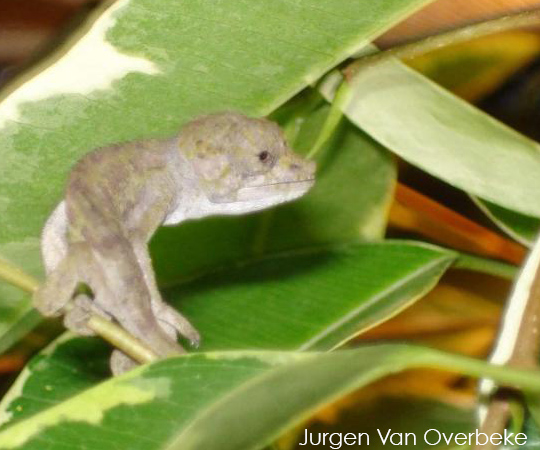
Neonate Trioceros fuelleborni from Jurgen’s private collection
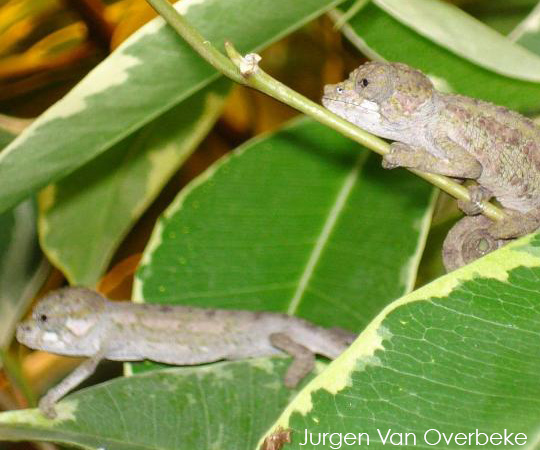
Neonate Trioceros fuelleborni from Jurgen’s private collection
Male Trioceros fuelleborni


female Trioceros fuelleborni
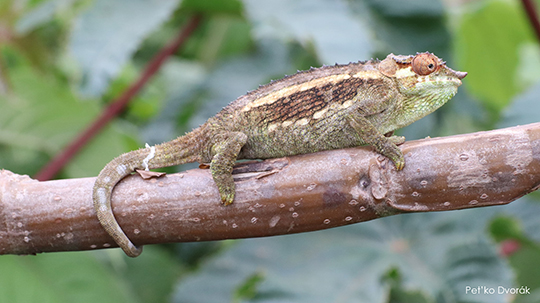
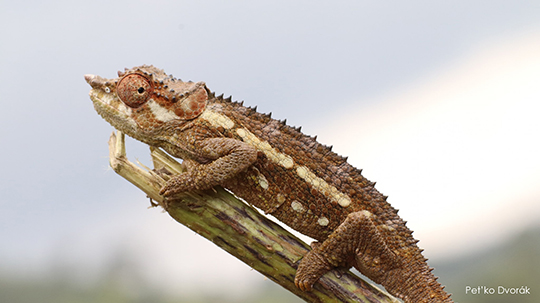
Trioceros fuelleborni in the Poroto Mountains
In 2018, Pet’ko Dvorák travelled to the Poroto Mountains in Tazania to find Trioceros fuelleborni in its natural habitat. He has graciously shared with us pictures from his trip.


